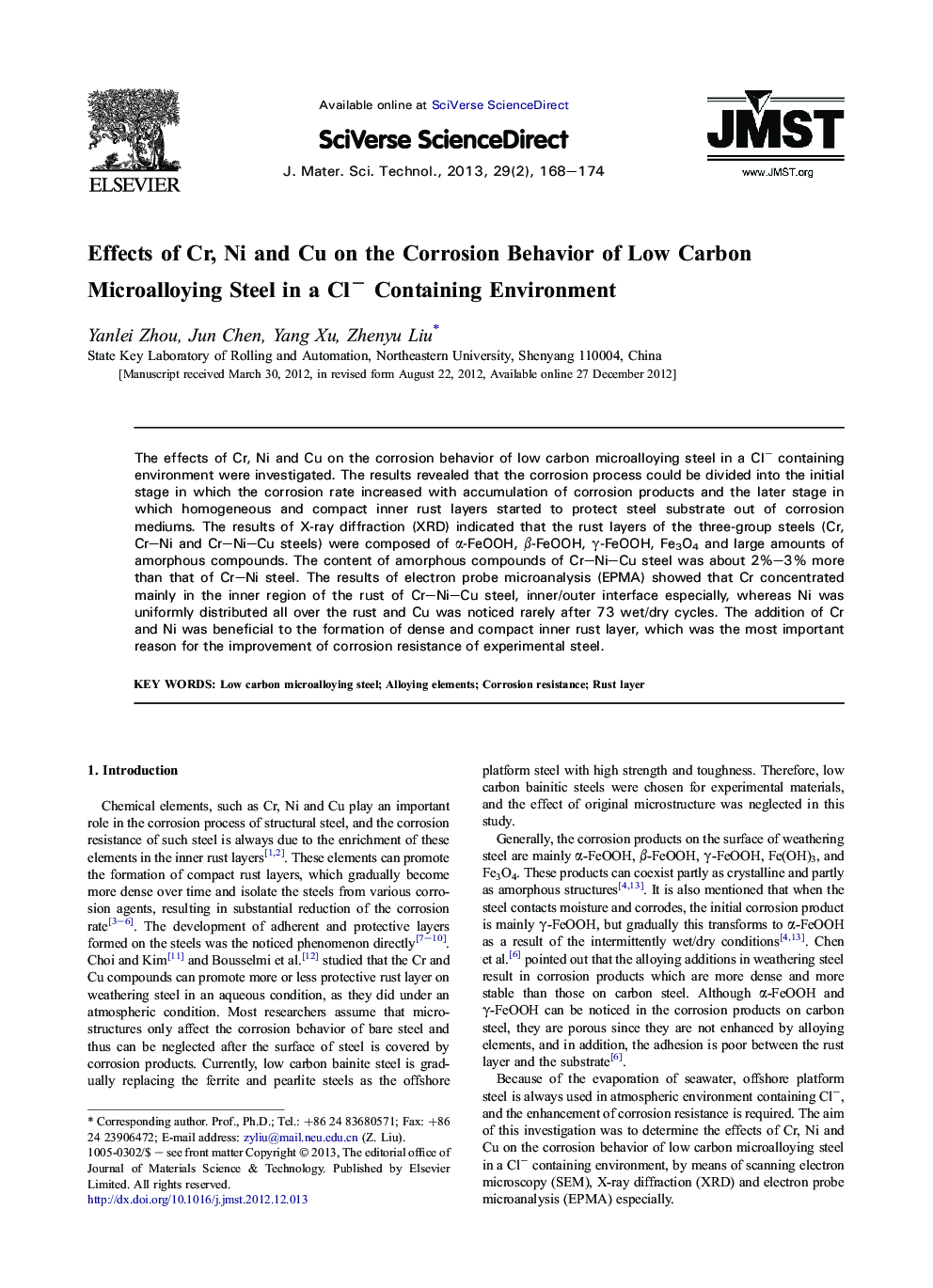| Article ID | Journal | Published Year | Pages | File Type |
|---|---|---|---|---|
| 1556500 | Journal of Materials Science & Technology | 2013 | 7 Pages |
Abstract
The effects of Cr, Ni and Cu on the corrosion behavior of low carbon microalloying steel in a Clâ containing environment were investigated. The results revealed that the corrosion process could be divided into the initial stage in which the corrosion rate increased with accumulation of corrosion products and the later stage in which homogeneous and compact inner rust layers started to protect steel substrate out of corrosion mediums. The results of X-ray diffraction (XRD) indicated that the rust layers of the three-group steels (Cr, Cr-Ni and Cr-Ni-Cu steels) were composed of α-FeOOH, β-FeOOH, γ-FeOOH, Fe3O4 and large amounts of amorphous compounds. The content of amorphous compounds of Cr-Ni-Cu steel was about 2%-3% more than that of Cr-Ni steel. The results of electron probe microanalysis (EPMA) showed that Cr concentrated mainly in the inner region of the rust of Cr-Ni-Cu steel, inner/outer interface especially, whereas Ni was uniformly distributed all over the rust and Cu was noticed rarely after 73 wet/dry cycles. The addition of Cr and Ni was beneficial to the formation of dense and compact inner rust layer, which was the most important reason for the improvement of corrosion resistance of experimental steel.
Related Topics
Physical Sciences and Engineering
Materials Science
Materials Chemistry
Authors
Yanlei Zhou, Jun Chen, Yang Xu, Zhenyu Liu,
